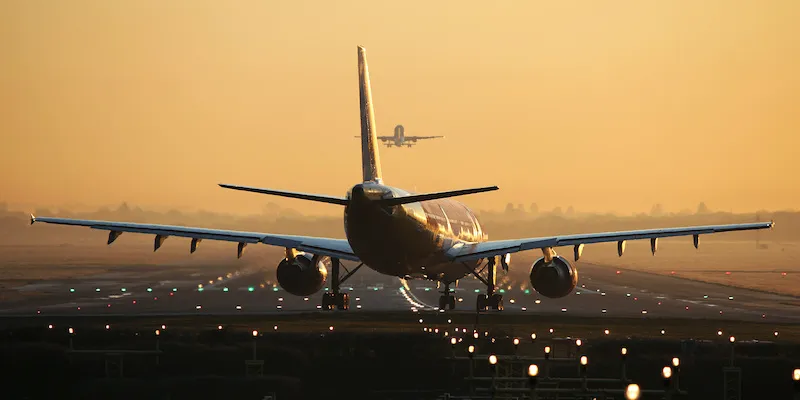Two ways Airlines might increase revenue

In an industry as crowded and competitive as global aviation, airlines are constantly tasked with growing revenue to remain viable and, ideally, profitable. Identifying cost-effective approaches to network expansion, distribution enhancement and revenues can help airlines execute their growth strategies and secure their fiscal health.
In today’s marketplace, cultivating new, sustainable sources of high-quality revenue and finding innovative ways to capitalize on surging travel demand is imperative to airlines achieving the long-term growth they need to survive and thrive. But to do so, they need new tactics and thinking beyond their core markets.
Expanding the route network
The first and most obvious source of new revenue for airlines is expansion. But expanding within mature, developed markets where an airline already has a presence is highly competitive and often dependent on aggressive pricing strategies to carve out share. Besides, in-market growth is hardly a new approach to revenue enhancement; it is what every airline strives to do.
By looking beyond core markets and exploring more remote global regions, airlines can uncover revenue streams that supplement efforts in their home or established markets, usually without encountering the same level of competition. While there may be a few genuinely untapped aviation markets left, plenty are underserved or poised to grow beyond what current operators can support.
Identifying and breaking into these markets can be difficult and costly to sell and market. Sales in non-strategic markets can cost carriers up to four times the total cost of sales in their core markets when marketing, payment and funds repatriation are considered. To directly issue tickets in a remote market, an airline must have a billing and settlement plan (BSP) agreement in place and arrangements with local payment processors. These bilateral integrations can be costly and time-consuming.
Instead, airlines can partner with a ticketing solutions partner that already has the necessary agreements and payment structures, allowing an airline to immediately and cost-effectively sell within those markets. Through this process, the airline can expand its route networks sustainably, which is key for reaching its overall revenue goals. When key strategic markets are fully explored, non-core markets are the engines of incremental revenue growth.
Of course, air markets are not the only vector for expansion available for airlines. Intermodal and multimodal travel represents a huge opportunity for airlines to grow their networks beyond airports. Initiatives like Deutsche Bahn’s Rail&Fly program allow airlines to sell both rail and air travel within the same itinerary, creating convenience and value for travelers while developing a new revenue stream for airlines (and the rail operator). Airlines have leaped at the chance to participate, including most recently the Star Alliance, signaling that intermodal expansion is viable and holds recognizable growth potential.
A new way of thinking about Global Distribution Systems
Air (and intermodal) network expansion is one path to new revenue for airlines. Another is rethinking traditional ideas about distribution. Of all the aspects of airline operations dependent on legacy technology, distribution is the most visible example – dominated by GDS systems that have been in place for up to 50 years and often conduct business like it is still the golden age of aviation. That’s not to say that GDSs are obsolete; on the contrary, they are the backbone of airline inventory distribution, woven into the industry’s fabric. They are not going anywhere.
But because they are so integral to the air travel business, airlines can sometimes perceive them as the only channel to bring their product to market and get “locked in” to their structures and processes. By taking a different approach – sub-hosting, which allows a third party with an existing GDS relationship to distribute the airline’s inventory through that GDS – airlines can gain much more control over how their inventory is sold and more effectively incentivize travel agents and OTAs by using the distribution costs that can be saved through GDS subhosting to incentivize their distribution partners directly. With GDS sub-hosting, airlines can also reduce the time and cost associated with traditional GDS implementation, creating space for them to experiment with other, newer GDS systems like China’s TravelSky without investing too heavily in time and resources to do so.
The importance of revenue quality
Exploring GDS sub-hosting can be a relatively quick and cost-effective way to grow revenue, but the quality of that revenue should also be considered. Most major markets and distribution channels reward aggressive pricing to appeal to price-sensitive travelers. But finding channels with low-price elasticity, like travel management companies (TMCs), can yield more revenue with less upfront investment. TMCs represent a way for airlines to increase sales and explore remote, non-strategic markets – effectively opening two new paths to revenue.
Many airlines have already begun re-evaluating their processes and strategies, and their awareness of the need for diversified, sustainable revenue streams has grown steadily over the past 24 months. Airlines can implement the tactics designed to cultivate those streams as air travel demand surges.
Network expansion, exploring new approaches to distribution, and putting a premium on revenue quality should be at the top of their growth strategies. And with the right ticketing and GDS sub-hosting partner, they can achieve their revenue goals more quickly and cost-effectively.
Read the full news here.


